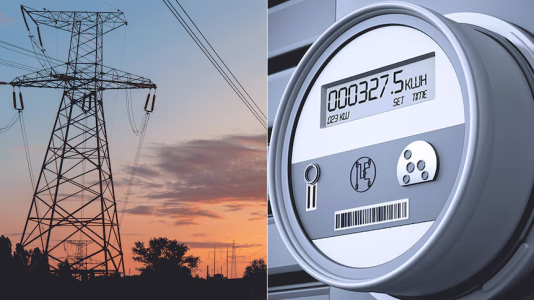NSW to see largest power price rises as default rates revealed
By
ABC News
- Replies 15
Energy prices could lift anywhere from 0.5 per cent to 9.7 per cent in different parts of the national electricity grid, in figures released on Monday.
The Australian Energy Regulator (AER) released a default market offer — essentially a price safety net — which limits what retailers can charge customers in New South Wales, South-East Queensland and South Australia.
The prices are meant to protect customers who don't shop around, as well as provide consistency so that people can compare alternative retailers.
The offer takes into account issues like what customers can afford, the cost of the overall system, and the need for the different parts of it to make a profit.
In its report, the operator says the cost-of-living crisis has been among the top of its considerations.
"In setting (prices), one of these matters is electricity affordability, which remains a top cost-of-living issue for households and concern for small businesses and was raised by many stakeholders as part of this process."
People in NSW get the worst of it.
On the default offer, average-sized bills will lift between $155 and $228, meaning a typical annual cost of between $1,965 and $2,741 to keep the lights on, depending on usage.
By contrast, even the highest average bill in Victoria will be lower than NSW's cheapest one.
The southern state's Essential Services Commission expects average annual residential bills to sit between $1,546 and 1,908.
Prices are rising in NSW, South-East Queensland and SA more than Victoria for a number of reasons.
The biggest contributors are wholesale cost — what retailers pay to generators for power they then on-sell — as well as the cost of the network, transporting it on poles and wires.
But costs involved in retailing — like billing, defaults and the cost of installing smart meters — also add up.
Victoria has had smart meters for a long time and is now experiencing "lower environmental costs and … lower retail operating margin" which has helped limit the rise of bills, even though the state is facing similar increases in wholesale and network costs.

The Australian Council of Social Services (ACOSS) says people are already making "enormous sacrifices" to meet their commitments.
"Today's announcement of another increase to electricity prices is a blow for people on the lowest incomes," says ACOSS CEO Cassandra Goldie.
"People struggling the most are going without food, medication and other essentials to try to pay their energy bills. Others are selling belongings or turning to buy now, pay later schemes."
It has called for a faster transition to renewable energy, rather than cash-backs on bills — which federal and state governments have been providing to reduce the sting of the rapidly-rising bills.
"One-off energy rebates to everyone are poorly targeted, expensive, and do not provide the permanent bill relief other solutions offer."
The director of think tank Climate Energy Finance, Tim Buckley, also blames our energy transition for the rise.
But not the roll-out of solar and wind farms — and the resulting new transmission lines required — and rather the on-going support of fossil fuel like coal and gas.
Mr Buckley, a former managing director of global investment bank Citigroup, says Australians are paying "export prices for our coal and gas", despite being among the top exporters of both commodities.
"Our governments have repeatedly failed to prevent the gouging of multinational corporations profiteering at our expense, using our public resources," he says.
With the increasing cost of transmission and distribution — often simplified to "poles and wires" — and the need to further modernise our grid, he wants government to embrace what he calls the "massive battery disruption" now underway.
The so-called "competition allowance" helps profits.
"(But) due to sustained cost-of-living pressures as indicated by the sustained nature of elevated underlying inflation, (the offer) does not include the competition allowance," the AER noted in its determination.
Still, prices will rise.
This is the final determination for Australia's most populous state, NSW, which will see the steepest price rises:
Victoria's energy regulator makes its own determination, which was also released on Monday.
The state's Essential Services Commission says residential customers on a flat tariff should expect to see a 1 per cent increase in prices, while small business customers can expect a 3 per cent rise.
All of the price increases take effect from 1 July.
In its pre-election budget, the Albanese government announced an extension of electricity bill relief to the value of $75 a quarter for households and small businesses.
The bill rebates will apply for the two quarters at the end of this calendar year.
By business reporter Daniel Ziffer and business editor Michael Janda
The Australian Energy Regulator (AER) released a default market offer — essentially a price safety net — which limits what retailers can charge customers in New South Wales, South-East Queensland and South Australia.
The prices are meant to protect customers who don't shop around, as well as provide consistency so that people can compare alternative retailers.
The offer takes into account issues like what customers can afford, the cost of the overall system, and the need for the different parts of it to make a profit.
In its report, the operator says the cost-of-living crisis has been among the top of its considerations.
"In setting (prices), one of these matters is electricity affordability, which remains a top cost-of-living issue for households and concern for small businesses and was raised by many stakeholders as part of this process."
Average NSW customer to see bills rise by about $200 a year
The price rises will add between $71 and $228 to the annual bills of customers.People in NSW get the worst of it.
On the default offer, average-sized bills will lift between $155 and $228, meaning a typical annual cost of between $1,965 and $2,741 to keep the lights on, depending on usage.
By contrast, even the highest average bill in Victoria will be lower than NSW's cheapest one.
The southern state's Essential Services Commission expects average annual residential bills to sit between $1,546 and 1,908.
Prices are rising in NSW, South-East Queensland and SA more than Victoria for a number of reasons.
But costs involved in retailing — like billing, defaults and the cost of installing smart meters — also add up.
Victoria has had smart meters for a long time and is now experiencing "lower environmental costs and … lower retail operating margin" which has helped limit the rise of bills, even though the state is facing similar increases in wholesale and network costs.

Cassandra Goldie is the chief executive of the Australian Council of Social Service. (Supplied: AAP)
'Enormous sacrifices' to pay bills
There's been swift responses to the announcement, as power bills have been one of the most notable elements in the inflation surge that has crunched household budgets in recent years.The Australian Council of Social Services (ACOSS) says people are already making "enormous sacrifices" to meet their commitments.
"Today's announcement of another increase to electricity prices is a blow for people on the lowest incomes," says ACOSS CEO Cassandra Goldie.
"People struggling the most are going without food, medication and other essentials to try to pay their energy bills. Others are selling belongings or turning to buy now, pay later schemes."
"One-off energy rebates to everyone are poorly targeted, expensive, and do not provide the permanent bill relief other solutions offer."
The director of think tank Climate Energy Finance, Tim Buckley, also blames our energy transition for the rise.
But not the roll-out of solar and wind farms — and the resulting new transmission lines required — and rather the on-going support of fossil fuel like coal and gas.
Mr Buckley, a former managing director of global investment bank Citigroup, says Australians are paying "export prices for our coal and gas", despite being among the top exporters of both commodities.
With the increasing cost of transmission and distribution — often simplified to "poles and wires" — and the need to further modernise our grid, he wants government to embrace what he calls the "massive battery disruption" now underway.
Regulator denies extra allowance for retailers
To help with the cost of living, despite pressure from energy retailers and generators, the operator did not impose a fee of $22 on residential customers and $26 on small businesses.The so-called "competition allowance" helps profits.
"(But) due to sustained cost-of-living pressures as indicated by the sustained nature of elevated underlying inflation, (the offer) does not include the competition allowance," the AER noted in its determination.
Still, prices will rise.
This is the final determination for Australia's most populous state, NSW, which will see the steepest price rises:
- Compared to last year, residential customers will see price increases of 8.5 per cent to 9.1 per cent.
- Customers with controlled load — for example, metering for a specific device that can use off-peak power, like underfloor heating or off-peak hot water — will see price increases of 8.3 per cent to 9.7 per cent.
- Small business customers will see increases of 7.9 per cent to 8.5 per cent.
- Residential customers without controlled load will see price increases of 3.7 per cent.
- Customers with controlled load will see price increases of 0.5 per cent, which is 1.9 per cent below forecast inflation.
- Small business customers will see increases of 0.8 per cent.
- Residential customers without controlled load will see price increases of 3.2 per cent.
- Customers with controlled load will see price increases of 2.3 per cent.
- Small business customers will see increases of 3.5 per cent.
The state's Essential Services Commission says residential customers on a flat tariff should expect to see a 1 per cent increase in prices, while small business customers can expect a 3 per cent rise.
All of the price increases take effect from 1 July.
In its pre-election budget, the Albanese government announced an extension of electricity bill relief to the value of $75 a quarter for households and small businesses.
The bill rebates will apply for the two quarters at the end of this calendar year.
By business reporter Daniel Ziffer and business editor Michael Janda








